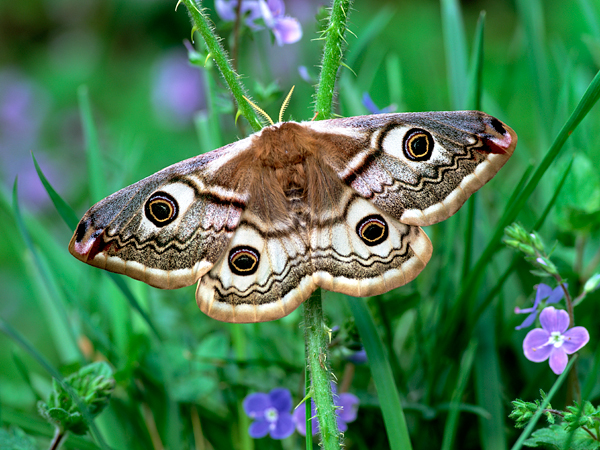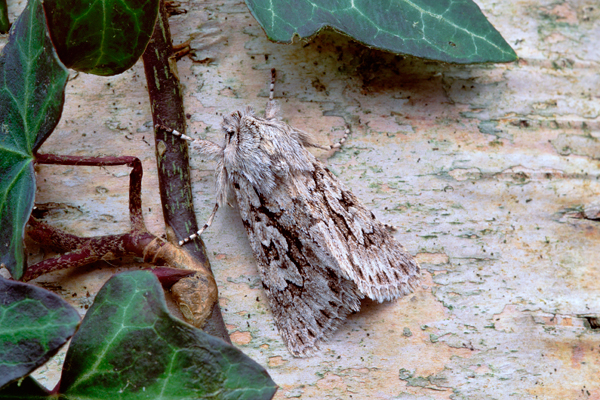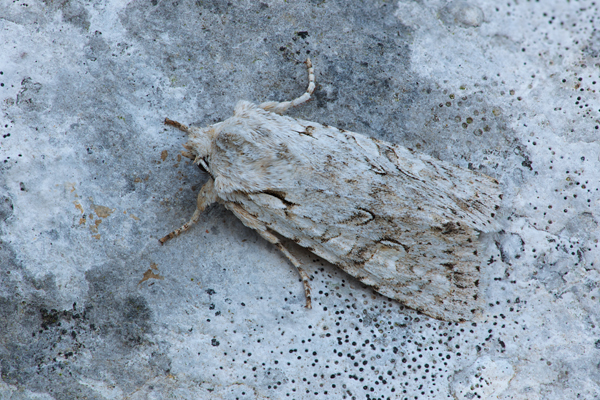April
The persistent cold weather has had an effect on the emergence many early species. Hopefully we have seen the last of this cold spell and things will now be able to catch up.
Emperor Moth Saturnia pavonia
This is one of Britain’s most colourful species and the only resident member of the Saturniidae family, which contain some of the largest and most beautiful moths in the world.
The adults are distinctive and unlikely to be confused with any other species. The males are reddish grey with two white patches on the forewings, which contain prominent eye spots. The hindwings are tawny-coloured with dark eye spots, which are concealed when the moth is at rest but revealed when alarmed or threatened.

Emperor MothSaturnia pavonia (female)
The Emperor is found on heaths, bogs and moorland. The males are most active in sunshine and are often seen flying swiftly and erratically over heather in search of newly emerged females, which are concealed low down in the vegetation where they can occasionally be seen during the day. The caterpillar’s feed on meadowsweet and heather and the egg-like cocoons can be found attached to the stems of heather during the winter months.
Early Grey Xylocampa areola
This is an early species normally seen in March and April in a variety of habitats including woodland, hedgerows and gardens. The adults rest by day on the trunks of trees, fence posts and rocks. Some individuals have a slight pinkish tinge to the forewings. These are commonly referred to as ab. rosea. The larvae feed from April until June on honeysuckle.

Early Grey Xylocampa areola
Grey Shoulder-knot Lithophane ornitopus lactipennis
This is an early autumnal species. Adults usually appear in September and October and then enter hibernation until the following spring when they re-emerge from late February to early June. The forewings are whitish grey, with a series of small irregular darker patches across the wing. The moth is found in deciduous woodland habitats with mature oaks Quercus spp. The adults rest by day mainly on the trunks of trees and old fence posts.

Grey Shoulder knot Lithophane ornitopus lactipennis

